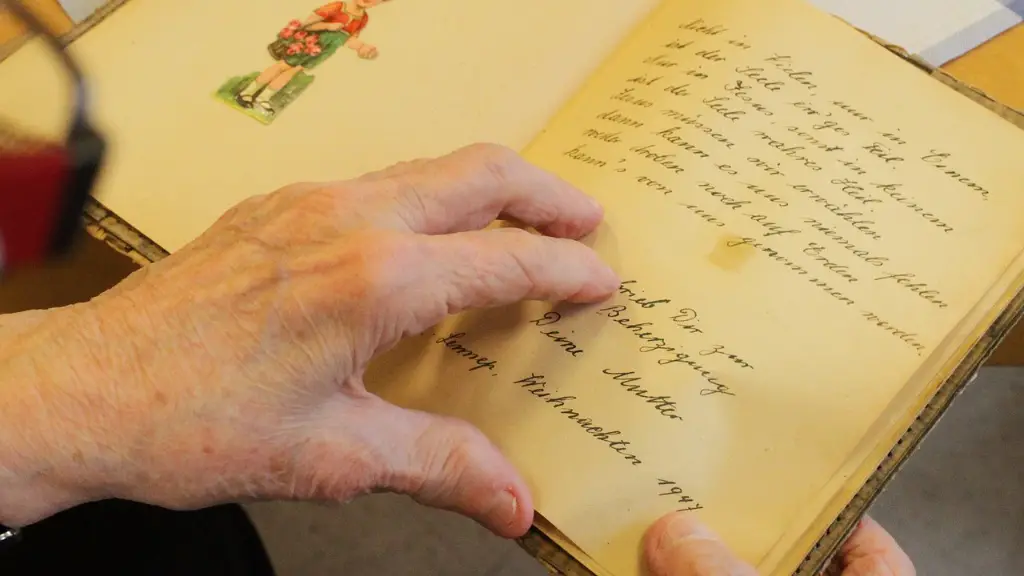Have you ever wondered what does symbolism mean in poetry? Symbolism is a type of figurative language associated with the use of symbols to signify ideas and qualities by giving them symbolic meanings that are different from their literal sense. Symbolism is one of the most common forms of expression used in poetry, and it can be used to express a wide variety of emotions, including joy, pain, sorrow, anger and love. Symbolism is often seen as a way to express the inner life or innermost thoughts and emotions of the poet.
The use of symbols in poetry has been around since the very early days of poetry. Ancient Greek poets would often create narratives utilizing symbols which could not only be interpreted literally, but also metaphorically. In fact, some of the earliest poems in Western literature were composed using symbols. Eventually, poets began to realize that by utilizing symbols, they could make their writing far more powerful and far more expressive.
The use of symbols in poetry can be used to convey a wide range of emotions. For example, a poet might use a natural landscape as a symbol for hope or freedom. Similarly, a poet might use a storm as a symbol for despair or foreboding. By utilizing a natural symbol in this way, the poet can not only convey their thoughts and feelings about the topic, but can also evoke powerful emotions in the reader. This is especially useful if the poet needs to create a clear image of some specific emotion in the reader’s head.
Symbolism is also often used to convey a deeper meaning behind the words being used in the poem. For example, a poet might use a tree as a symbol for life, growth and progress. In this case, the poet is using the tree as a metaphor for the cycle of life, and the hopes that one day the tree will reach its fullest potential. By using the symbol in this way, the poet is not only conveying a deeper meaning to the reader, but also creating an emotional connection with the reader.
The use of symbols in poetry can be a powerful tool for conveying emotion and creating powerful images in the minds of readers. Poets can use these symbols to evoke powerful emotions in their readers, create a deeper meaning behind their words, and create powerful images that transcend language. By utilizing symbols in this way, poets can create poems that are both powerful and meaningful.
Implications of Symbolism
The use of symbolism in poetry can have major implications for the larger world. For example, symbolism has been a major part of major cultural, political and religious movements throughout history. The use of powerful symbols can convey a sense of collective identity, and can be used to spread messages of hope, justice and equality.
The use of symbols in poetry can also be seen as a form of artistic expression. By using symbols to convey a meaning or emotion, poets can make their work even more powerful and expressive. Symbolism can also be used to create nuanced and complex works of art, as the reader can interpret the symbols in multiple ways. In this way, the use of symbols can add a great deal of depth and nuance to any poem.
Symbolism in poetry can also be seen as a way for the poet to express their innermost thoughts and feelings. By utilizing symbols in this way, the poet can express deep emotional states and convey their innermost feelings in a way that would otherwise be difficult to do through language alone. In this way, the use of symbols can be a powerful tool for expressing emotions and thoughts that would otherwise remain hidden from the reader.
Finally, symbolism is also often used as a way for the poet to engage their readers and create a connection with them. By utilizing symbols in their work, poets can evoke powerful emotions in their readers, and make their poems even more powerful and compelling. In this way, the use of symbolism can be a powerful tool for poets to engage their readers and create an emotional connection with them.
Types of Symbolism
There are several types of symbolism that can be used in poetry. For example, metaphor is a type of figurative language that is used to suggest one thing is another. A metaphor might be used to compare two things that aren’t directly related, such as implying that one thing is like a storm brewing inside. Metaphors can be used to create powerful images and convey complicated ideas in an efficient and effective manner.
Personification is another type of figurative language that is used to give human characteristics to non-human objects. For example, a poet might use personification to give a chair the ability to speak and tell a story. By using personification, the poet can create a powerful connection between the human and non-human elements represented in the poem.
Finally, symbolism can also be used to create symbolism in abstract concepts, such as representing hope or joy with a flower or a star. By utilizing this type of symbolism, the poet can create a powerful connection between the abstract concept and the concrete object. This type of symbolism can be used to convey complex emotions and thoughts in a beautiful and succinct manner.
Symbolism in Poetry Analysis
Symbolism is an important tool for analyzing and interpreting poetry. By analyzing the symbols used by a poet, a reader can gain insight into the deeper meaning of a work. Symbols can represent a wide range of emotions, feelings, ideas and concepts, and by analyzing them, readers can gain a greater understanding of the poem and the thoughts and feelings of the poet.
For example, analyzing the symbols used in a poem can help the reader to understand the poet’s view of the world or their take on a certain situation or emotion. Analyzing the symbolism in a poem can also help the reader to understand the deeper meaning behind the poet’s words and gain a greater understanding of the poem’s message as a whole.
Symbolism can also be used to interpret the different aspects of a poem. For example, if a poem contains a lot of symbols representing death and mortality, the reader can assume that the poet is trying to convey a message about mortality and the passage of time. Similarly, if a poem contains a lot of symbols associated with joy and hope, the reader can interpret the poem as a hopeful and uplifting piece of work.
By analyzing the use of symbolism in a poem, readers can gain a greater insight into the work and a better understanding of the poet’s thoughts and feelings. Symbols can be used to represent a wide range of emotions, feelings and ideas, so analyzing them can be an effective tool for interpreting a poem and gaining a greater understanding of its message.
Symbolism in the Real World
The use of symbolism in poetry is not limited to poetry alone. Symbolism is also used in visual art, literature, music and other forms of artistic expression. In fact, symbols are often used to depict or represent a wide range of concepts, including political ideologies, religious beliefs and philosophical concepts.
Symbols can also be seen in everyday life. For example, a flag is often used to represent a nation, and a hammer and sickle is often used to represent communism. Similarly, a cross is often used to represent Christianity, and a crescent moon is often used to represent Islam. All of these symbols convey specific messages about the ideas or concepts they represent, and they can be used to evoke powerful emotions in the people who view them.
Symbols are also often used in branding and advertising. Companies often use symbols to represent their brands and to create a connection with their target audience. Similarly, symbols can be used to create an emotional connection with the viewer, and to convey a specific message about the brand or product.
Finally, symbols can also be used to convey powerful messages within a culture. Symbols can be used to represent the values, beliefs and ideals of a culture, and they can be used to communicate ideas and communicate emotions. In this way, symbols can be used to represent a wide variety of ideas and beliefs, and they can be used to create powerful connections between people and culture.
Symbolism as a Tool for Communication
Symbolism is an important tool for communication, both within and between cultures. By utilizing symbols in a poem, a poet can convey a powerful message about their beliefs and emotions to their readers. Similarly, symbols can be used to create powerful connections between cultures and peoples, and to convey powerful messages about beliefs and values. Finally, symbols are often used to create emotional connections with people and to convey messages about brands and products.
Symbolism is an important tool for communicating ideas, beliefs and emotions. By utilizing symbols, poets, artists and writers can create powerful connections with their readers or viewers, and can convey powerful messages about their beliefs and values. Similarly, symbols can be used to create powerful connections between cultures and to convey messages about beliefs and values. Symbolism is not just an important tool for poets and writers, but also for anyone who wishes to communicate powerful ideas and emotions to the people around them.





